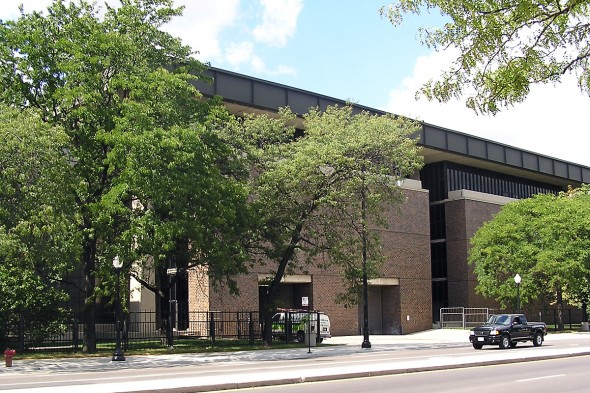Retrofit reduces energy costs in science buildings

An energy retrofit project in five buildings on the east side of campus, including the Science and Engineering labs, could save $18 million a year. (Click on image for a larger file.)
An energy retrofit in five campus science buildings could reduce energy consumption by at least 30 percent and save $18 million annually.
The energy efficiency and infrastructure upgrades will include the two Science and Engineering Laboratories, Science and Engineering South, the Science and Engineering Office Building and the Engineering Research Facility, totalling more than 1.2 million square feet. The first four buildings date from the mid-1960s.
“We expect the project to yield immediate cost-savings for UIC, but more important is that it supports UIC’s Climate Action Plan and will help us meet our goal to reduce our carbon emissions at least 80 percent by 2050,” said Chancellor Paula Allen-Meares.
The two-year construction project will include new and recommissioned air handling units, HVAC control systems and equipment, high-performance fume hoods, lighting, weatherization and energy recovery.
Cynthia Klein-Banai, associate chancellor for sustainability, said the energy reduction of 9,219 metric tons of carbon dioxide is equivalent to taking 1,921 cars off the road or planting 71 acres of trees. The expected savings of 81 million kilowatt-hours of electricity is enough to power about 2,500 homes, she said.
“UIC is committed to becoming a more sustainable campus by reducing our environmental impact, generating economic benefit, and creating a more comfortable, healthier environment for the thousands of students, faculty and staff who use those buildings daily,” Klein-Banai said.
The project is expected to directly create 592 jobs, according to Ameresco, the energy management company contracting with UIC.
The energy reduction is consistent with the city’s Sustainable Chicago 2015 Action Agenda for commercial buildings, which calls for reducing energy consumption by at least 20 percent by 2015.
